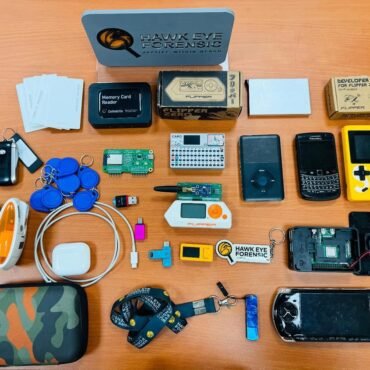Introduction
Have you ever deleted photos, messages, or files from your smartphone and assumed they were gone forever? The truth is, deleted doesn’t always mean erased. Smartphones, whether Android or iPhone, store data in ways that often leave recoverable traces even after deletion. This is where the science of data recovery comes in—helping investigators, forensic experts, and sometimes everyday users restore valuable information.
In this blog, we’ll explore how smartphone data recovery works, why deleted files are not always gone, the tools professionals use, and steps you can take to safeguard your privacy.
Why Deleted Data Can Be Recovered
When you “delete” something from your phone, the operating system typically:
However, the actual file content remains stored in the memory until new data overwrites it. This means:
This principle makes data recovery possible on smartphones.
Common Scenarios for Smartphone Data Recovery
-
Accidental Deletion – Recovering photos, contacts, or chats deleted by mistake.
-
Factory Reset or Formatting – Forensic tools can sometimes extract traces even after resets.
-
Corrupted Phones – Recovering data from devices stuck on the boot screen or with OS failures.
-
Damaged Devices – Physical damage like water exposure or broken screens doesn’t always mean data is lost.
-
Legal & Criminal Investigations – Law enforcement often relies on smartphone forensics to uncover evidence.
How Experts Recover Deleted Data
-
Extracts accessible files and system logs.
-
Useful for recovering recently deleted texts, call history, and app data.
-
Creates a bit-by-bit copy of the smartphone storage.
-
Enables recovery of deleted and hidden data, even from unallocated space.
-
Scans raw memory blocks for file signatures (e.g., JPEG, MP4, PDF).
-
Reconstructs deleted media files when metadata is missing.
-
Many smartphones sync with Google Drive, iCloud, or other services.
-
Cloud accounts may hold deleted backups of photos, chats, and documents.
Tools Used in Smartphone Data Recovery
Experts rely on advanced forensic tools to ensure safe and reliable recovery, such as:
-
Cellebrite UFED – Widely used by law enforcement for mobile forensics.
-
Oxygen Forensic Detective – Offers in-depth app and cloud data extraction.
-
Magnet AXIOM – Powerful in analyzing both mobile and cloud evidence.
-
Dr.Fone, iMobie, Tenorshare – Consumer-level tools for accidental deletion cases.
Risks and Challenges in Data Recovery
-
Overwritten Data – Once new files occupy the deleted file’s space, recovery is difficult or impossible.
-
Encryption – Modern smartphones encrypt storage, requiring decryption keys for access.
-
Damaged Hardware – Severe physical damage may require chip-off or advanced lab recovery.
-
Legal Limitations – Unauthorized access to someone else’s data can be illegal.
How to Protect Your Privacy
If you’re concerned about your deleted data being recovered:
-
Use secure erase tools that overwrite deleted data.
-
Encrypt your smartphone to prevent unauthorized access.
-
Factory reset + overwrite (e.g., filling storage with dummy data) before selling your device.
-
Rely on trusted experts if you need recovery for personal or professional purposes.
Conclusion
Deleting files from your smartphone doesn’t always mean they’re gone forever. With the right tools and techniques, forensic experts can often recover deleted texts, photos, and other files—even from damaged or formatted devices. While this is a powerful tool for investigators and individuals trying to restore lost data, it’s also a reminder to take proactive steps to secure your privacy.
Whether you’re recovering precious memories or investigating cybercrime, understanding the science behind smartphone data recovery is essential in today’s digital age.
“Need help recovering lost data from your smartphone? Hawk Eye Forensic specializes in mobile forensics and data recovery, ensuring maximum recovery with 100% privacy. Contact us today for expert assistance.”





Post comments (0)